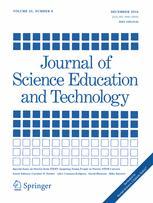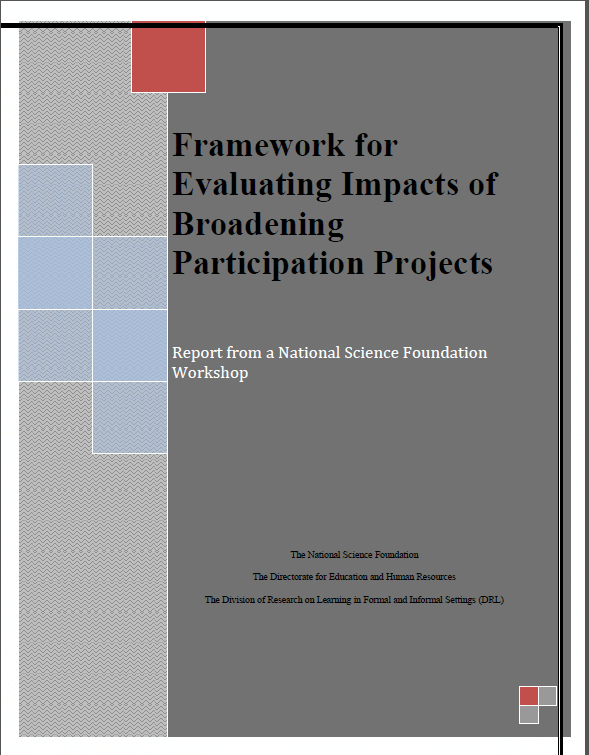Resources included in these libraries were submitted by ITEST projects or STELAR and are relevant to the work of the NSF ITEST Program. PDFs and/or URLs to the original resource are included in the resource description whenever possible. In some cases, full text publications are located behind publishers’ paywalls and a fee or membership to the third party site may be required for access. Permission for use must be requested through the publisher or author listed in each entry.
Preparing Students for Middle School Through After-School STEM Activities
PublicationThe middle school years are a crucial time for cultivating students’ interest in and preparedness for future STEM careers. However, not all middle school children are provided opportunities to engage, learn and achieve in STEM subject areas. Engineering, in particular, is neglected in these grades because it usually is not part of science or mathematics curricula. This study investigates the effectiveness of an engineering-integrated STEM curriculum designed for use in an after-school environment. The inquiry-based activities comprising the unit, Think Like an Astronaut, were intended to
Middle School Engagement with Mathematics Software and Later Interest and Self-Efficacy for STEM Careers
PublicationResearch suggests that trajectories toward careers in science, technology, engineering, and mathematics (STEM) emerge early and are influenced by multiple factors. This paper presents a longitudinal study, which uses data from 76 high school students to explore how a student’s vocational self-efficacy and interest are related to his or her middle school behavioral and affective engagement. Measures of vocational self-efficacy and interest are drawn from STEM-related scales in CAPAExplore, while measures of middle school performance and engagement in mathematics are drawn from several
Using Robotics and Game Design to Enhance Children’s Self-Efficacy, STEM Attitudes, and Computational Thinking Skills
PublicationThis paper describes the findings of a pilot study that used robotics and game design to develop middle school students’ computational thinking strategies. One hundred and twenty-four students engaged in LEGO® EV3 robotics and created games using Scalable Game Design software. The results of the study revealed students’ pre–post self-efficacy scores on the construct of computer use declined significantly, while the constructs of videogaming and computer gaming remained unchanged. When these constructs were analyzed by type of learning environment, self-efficacy on videogaming increased
Measuring Student Career Interest within the Context of Technology-Enhanced STEM Projects: A Cross-Project Comparison Study Based on the Career Interest Questionnaire
PublicationThis article describes Energy for ME and Going Green! Middle Schoolers Out to Save the World, two Science, Technology, Engineering, and Mathematics (STEM) education programs with the common goal of improving students’ attitudes about scientific careers.
Innovations and Challenges in Project-Based STEM Education: Lessons from ITEST
PublicationFor over a decade, the National Science Foundation’s Innovative Technology Experiences for Students and Teachers (ITEST) program has funded researchers and educators to build an understanding of best practices, contexts, and processes contributing to K-12 students’ motivation and participation in Science, Technology, Engineering, and Mathematics (STEM) activities that lead to STEM career pathways. The outcomes from these projects have contributed significantly to the national body of knowledge about strategies, successes, models, and interventions that support and encourage youth to pursue
Journal of Science Education and Technology Special Issue - Stories from ITEST: Inspiring Young People to Pursue STEM Careers
Publication
The ITEST program has enabled creativity, experimentation, and cultural responsiveness in STEM education and workforce development and broadened participation in STEM initiatives to Native American communities, underresourced urban communities, girls, and populations underrepresented in STEM fields. By approaching research and evaluation with flexibility and resourcefulness, the authors provide empirical evidence for the value of innovative approaches to STEM education that promote STEM interest and career-related outcomes and that build the foundational skills of the scientific and engineering workforce of the future.
Framework for Evaluating Impacts of Broadening Participation Projects: Report from a National Science Foundation Workshop
Publication
BackgroundThis report grew out of a workshop and follow-up session sponsored by the National Science Foundation (NSF), Directorate for Education and Human Resources (EHR). The two-day workshop and subsequent meeting sought to develop and validate evaluation practices to assess the value of NSF’s investment in broadening participation across all directorates and programs. Invited participants included NSF grantees, professional evaluators, and the policy community (which included representatives from Congress, the Office of Management and Budget (OMB), NSF staff, and staff from other federal
PromotePrevent: Preventing Bullying
Curricular MaterialsBullying is a growing problem in our country. More damaging than youth conflict—bullying can be both physically and emotionally traumatic for the youth involved, as well as those who see it occur. Bullying affects children starting in preschool and can last beyond high school. It can take the form of physical abuse, or hurt victims through rumors and exclusion. BUT—there’s good news. Bullying can be stopped and the first step is understanding it.Filter the tools and resources available to find what you need to take action, or browse the full collection of resources via the links below. School
Voices Against Violence
Curricular MaterialsHelping Students, Parents, and School Staff Speak UpNo community is safe from the devastating effects of bullying and school violence—but you can learn to prevent these threats. One of the most powerful steps a school community can take to prevent violence is to teach young people and adults to be active bystanders who take positive steps when conflict arises. It’s not always clear what bystanders should do when faced with violent or potentially violent situations. Voices Against Violence can guide youth and adults on how to intervene safely and effectively.Voices Against Violence contains
STELAR Webinar: National Science Foundation Funding for Small Grants for High Risk/High Gain (EAGER) Maker Education Projects
VideoOn Thursday, November 3, STELAR hosted NSF Program Officers Bob Russell and Erick Jones as they presented a webinar on National Science Foundation funding for R&D education projects funded through the Dear Colleague Letter Catalyzing the Future of Making (NSF 15-086). An overview of specific